Summary
- Energy in magnetic fields
- LC circuits
- accelerating charges
- EM wave description
- Quiz bonus Ch.32
- Written Quiz Ch.32

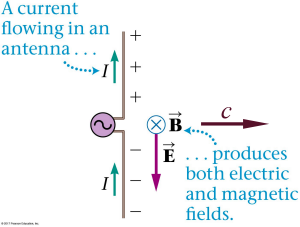
- Antennas
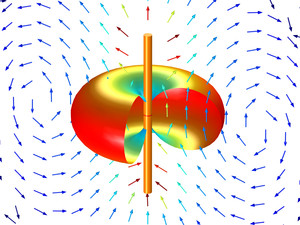

- Energy & momentum of EM waves
- The electromagnetic spectrum
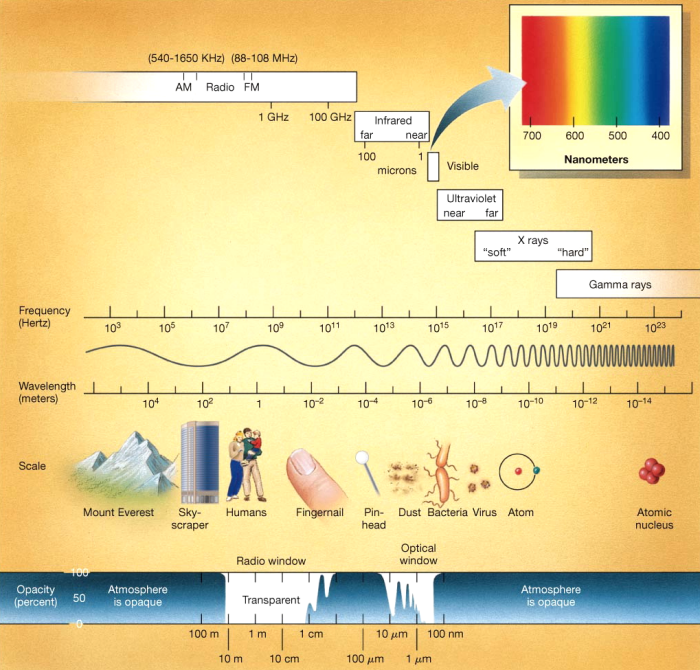
End of material on Exam III
- Exam III
- Practice:
Try these additional examples
Example #6
Example #7
Example #8
- Prepare:
Read textbook section 33-5 before the next lecture
knight2 36.cq.8
A series RLC circuit is driven by an AC emf at a frequency that is less than the
resonance frequency. Which of the following is true?
A. The current lags the emf.
B. The current and emf are in phase.
C. The current leads the emf.
Answer
Walker5e 25.03mod
An electric charge on the z axis oscillates sinusoidally about the origin. A distant observer is located at a point on the +x axis. In what direction will the electric field oscillate at the observer's location?
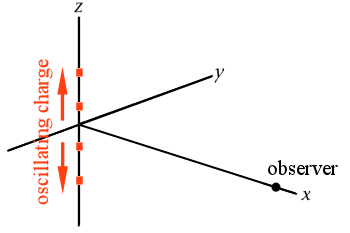
A. in the ± x direction
B. in the ± y direction
C. in the ± z direction
D. in a plane tipped 45° from the xz plane
Answer
Walker5e 25.03mod
An electric charge on the z axis oscillates sinusoidally about the origin. A distant observer is located at a point on the +x axis. In what direction will the magnetic field oscillate at the observer's location?

A. in the ± x direction
B. in the ± y direction
C. in the ± z direction
D. in a plane tipped 45° from the xz plane
Answer
Walker5e 25.03mod
An electric charge on the z axis oscillates sinusoidally about the origin. A distant observer is located at a point on the +x axis. In what direction will the electromagnetic wave propagate at the observer's location?

A. in the x direction
B. in the y direction
C. in the z direction
D. along a line inclined 45° from the x axis
Answer
PSE6 34.16
What is Bmax for an EM wave that is emitted by a 10.0 kW radio station
broadcasting 5.00 km away?
A. 516 pT
B. 338 nT
C. 33.3 µT
D. 19.5 mT
Answer
PSE9 34.42
Given Isolar = 1360 W/m2 at Earth, what is the total solar radiation force on
the planet Mars? (Look up astronomical data in your book.)
A. 3.25×105 N
B. 7.00×107 N
C. 9.58×1018 N
D. 1.64×1021 N
Answer
klm
In March 2005 Steve Fossett flew the Virgin Atlantic GlobalFlyer 36,912 km in 67 hours to circumnavigate the world.
In how much time would an EM wave complete the same trip?
A. 0.123 s
B. 8.10 s
C. 76.7 µs
D. 3.62 h
Answer
klm
What is the wavelength of radio waves broadcast by AM 620 WTMJ? (AM station numbers correspond to the
broadcast frequency in kHz.)
A. 2.07 mm
B. 484 m
C. 1.86×1014 m
D. 3.00×108 m
Answer
Walker5e 25.49
What is the maximum value of the electric field in an electromagnetic wave whose average intensity is 7.55 W/m²?
A. 75.4 V/m
B. 107 V/m
C. 302 V/m
D. 5690 V/m
Answer
C. The current leads the emf.
When the frequency is low, the capacitive reactance is large. The
phase angle is negative for such capacitive circuits because the current leads the voltage in a
capacitor circuit. When the driving frequency is at resonance, the circuit is purely resistive
and the phase angle is zero. When the frequency is higher than resonance, the inductive reactance
dominates, the phase angle is positive, and the current lags the voltage. In this case the frequency
is below the resonant frequency, so the circuit is capacitive and the current leads the emf. (See Halliday,
Resnick, & Walker, Fundamentals of Physics, 10th ed.,
Figure 31-16 p. 925.)
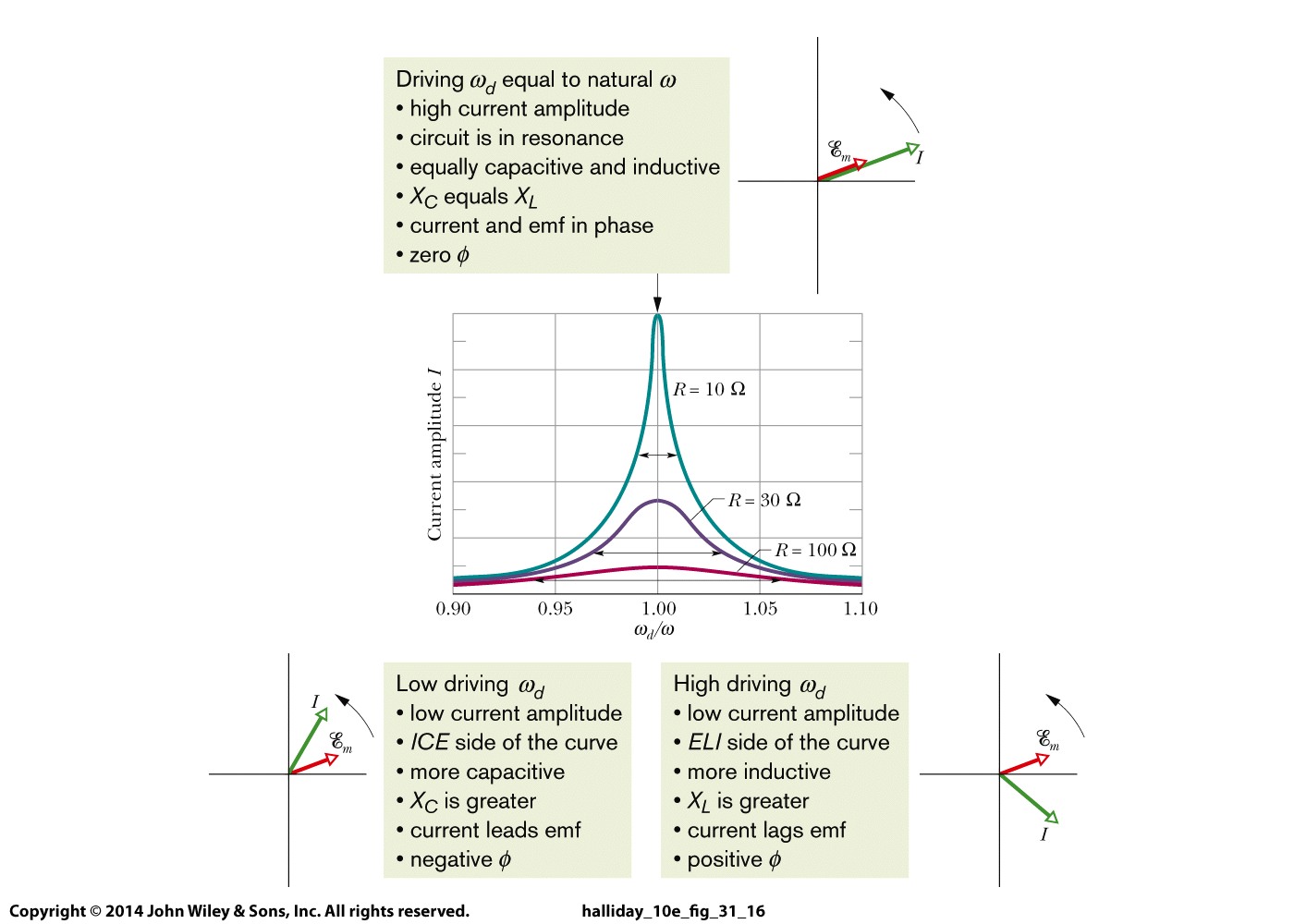
C. in the ± z direction
The electric field oscillates in the same direction the charge oscillates, or along the same direction current oscillates in a linear antenna.
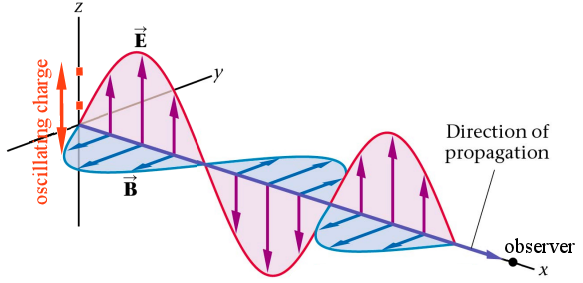
B. in the ± y direction
The magnetic field oscillates perpendicular to the electric field, in a direction given by the right-hand rule (fingers along E, curl toward B, thumb in direction of propagation).

A. in the x direction
In order for the wave to reach the observer it must begin at the origin and travel along the x axis toward the observer. Of course there are simultaneously other portions of the electromagnetic wavefronts traveling away from the origin, mostly in the xy plane, that miss the observer and are not detected.

A. 516 pT

B. 7.00×107 N
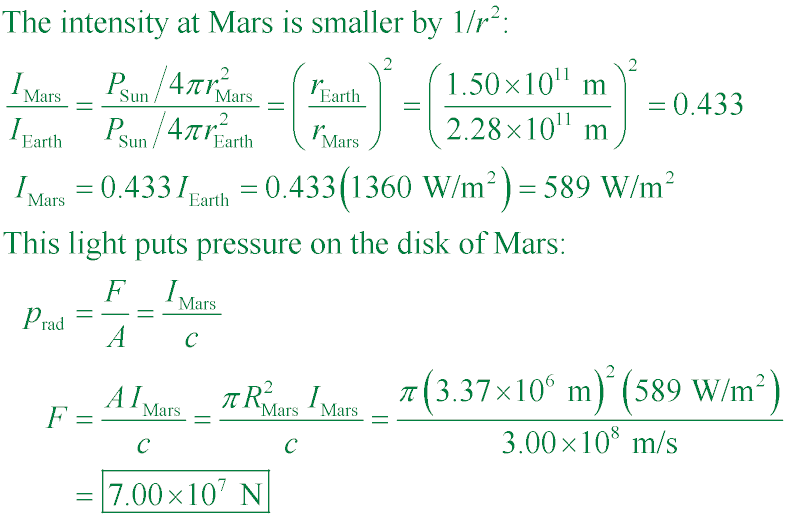
This is about 7,000 tons of force! This is a slightly low estimate because it assumes all the light is
absorbed when in fact some of it is reflected. But compare it to the gravitational force of the Sun
on Mars, which is 1.64×1021 N, or about 2×1013 times more force than
the radiation force! Put another way, the radiation force pushes Mars about 1.0 cm
(out of 2.28×1011 m) further away from the Sun than it would be if it were influenced
by gravity alone.
A. 0.123 s

B. 484 m

A. 75.4 V/m













